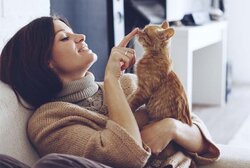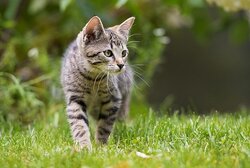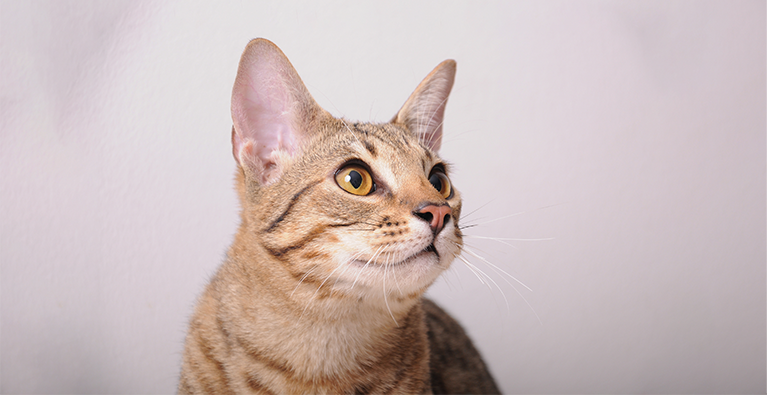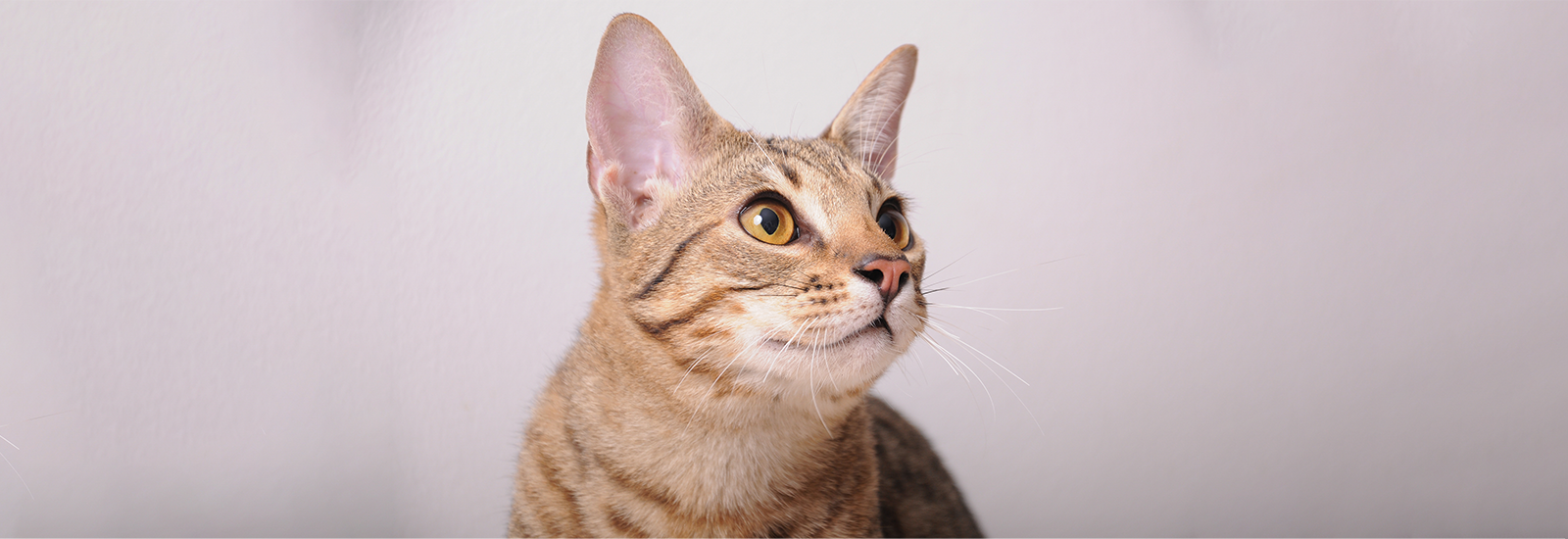Ocicat
The characteristic feature of this beautiful breed of cat is its spots. They give the Ocicat a “wild” appearance. There is, however, no cause for alarm, because at home they are very affectionate, loving cats that adore being cuddled.
Profile of the Ocicat
- Size medium
- Weight female: approx. 4.5 kg, male: approx. 5.5 kg
- Origin USA
- Build athletic, graceful
- Length of fur short, smooth
- Colour of fur from cream to black
- Grooming easy
- Behaviour playful, talkative
- Character affectionate, even-tempered
Appearance and character of the Ocicat
The Ocicat is one of the few breeds of cat with spots. The breed standard specifies dark spots on a light background. These should extend from the shoulders to the hindquarters and as far down the legs as possible. The neck and lower legs should have as many intermittent rings as possible and the tip of the tail should always have a dark colour. The coat itself is short, smooth and silky in texture with a shiny lustre. 12 different colours are allowed: fawn, cinnamon, lavender, chocolate, blue and black – each of them as a pure colour or as a silver variant.
An Ocicat’s body is medium to large in size, athletic in build, muscular and at the same time sleek and elegant. It is relatively long and should never have a chubby appearance. The eyes are large and can be any colour except blue. Ear tufts are welcome, but are not required by the breed standard. Pale, blurred markings are not desirable.
It is not just the Ocicat’s appearance that is impressive, but also its character. It is an interesting mixture that reflects its origins. These involve the Abyssinian cat, which is known for its playfulness, even-temperedness and resilience to stress, and the Siamese, with its affectionate, talkative and playful nature. The result is a breed of cat that has a very versatile character. If you are interested in an Ocicat, you should ask the breeder about the temperament of the kittens. It is often possible to tell whether you are dealing with a little rascal or a more reserved animal when they are just a few weeks old. However, you cannot really go wrong, as they are all known to be very sociable and affectionate. This makes the breed ideal for a family with children.
Keeping and caring for an Ocicat
An Ocicat is a delightful companion. On the one hand, it is very affectionate and attached to humans, making it ideal for lots of cuddling sessions. On the other hand, it is quite a wild little creature. At times, things can get rather fast-paced with an Ocicat as a pet, so you will have plenty of variety in your home. And variety is something that this breed needs in its life. An Ocicat cannot deal with being bored over an extended period of time. This is why it not only needs its humans, but it also has to have a stimulating environment or even a fellow cat. Cats prefer to live in pairs, so it is less of a problem for them if none of their two-legged companions are at home. It is also a good idea to provide them with a variety of different cat toys and an interesting cat tree. If their human plans plenty of time for cuddles every day, the world of the Ocicat will be more than fine.
If you are looking for a cat that is easy to care for, you will find the perfect companion in the Ocicat. This beautiful shorthair breed requires practically no grooming. This is not only thanks to its short fur, but also because it has hardly any undercoat. All you need to do is to run a brush, comb or grooming glove through its fur from time to time in order to remove any dead hair.
Nutrition
Whether it’s a kitten, an adult cat or a senior – the food for an Ocicat should always be of high quality and tailored to its age. Cats are carnivores by nature, so cat food should always contain a high proportion of meaty ingredients. Sugar, flavour enhancers and artificial colourings and preservatives do not belong in the food.
animonda has the ideal food for every stage of your cat’s life. You can choose between kitten, adult and senior cat food. The products are specially formulated to meet the specific nutritional requirements of the different life stages of cats. This provides the best foundation for your pet to enjoy a long and healthy life.
Health of the Ocicat
Not a lot is known about typical illnesses in the Ocicat. They are considered to be healthy and robust, as reflected in their average life expectancy of 15 years. Because the gene pool is limited, problems with inbreeding cannot be ruled out. These can involve the heart disease HCM (hypertrophic cardiomyopathy) and the eye disease PRA (progressive retinal atrophy). There are also some reports of pyruvate kinase deficiency, a specific form of anaemia. It is advisable to only purchase an Ocicat from a reputable breeder who ensures that the risk of disease is kept to a minimum by means of preliminary examinations and genetic tests.
History and breeding
The Ocicat has a very unusual origin: in 1964, the cat breeder Virginia Daly had an idea. She decided to mate one of her Abyssinian tomcats with a Siamese cat. The plan was to create a Siamese with Abyssinian markings, and the result really was Aby-Point kittens. However, one kitten was very different from the others. It had unusual gold-spotted fur, which was not at all what she was looking for. Virginia Daly decided to neuter little Tonga and sold him to a medical student for 10 dollars.
Because of his beautiful markings, a local newspaper published a photo of Tonga. This caught the eye of the geneticist Dr Clyde Keeler. He wrote to Mrs Daly asking if she would like to start her own breeding programme with Tonga and his mother. This was no longer possible due to the neutering, however the cat breeder was interested in the idea and once again tried to mate a Siamese cat with an Abyssinian. The first attempt proved unsuccessful, but the second produced another spotted specimen. This was how breeding of the Ocicat began.
A name for the new breed was quickly found, because the spotted cats reminded Virginia Daly’s daughter of the ocelot, a South American wild cat. The words Ocelot and Cat were combined to form the word Ocicat, which was to become the name for this breed of cat. Siamese and Abyssinian cats were primarily used for breeding, although American Shorthairs were also occasionally used. This was done to increase the variety of colours. Virgina Daly had probably hoped for success a little earlier, but ultimately she achieved her objective: in 1987 the breed was officially recognised in the USA, and in 1992 the European governing body, FIFe, followed suit. Despite its fascinating appearance, the Ocicat has never become widely known. It is one of those rare breeds of cat that are relatively difficult to acquire.
You may also like this

Feeding kittens - nutrition tips
What kittens need for healthy development

Good cat food
How to recognize good cat food for your cat

A kitten is moving in
Tips for collection, initial equipment and settling in

Getting your cat used to being outdoors
How to get your cat used to going outside

